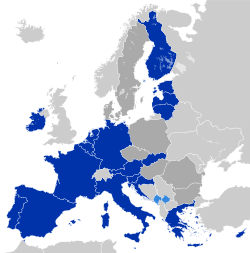Type of EU legislative act
For the regulation of the European Union single market, see Internal market.
A regulation is a legal act of the European Union [1] which becomes immediately enforceable as law in all member states simultaneously. [2] [3] Regulations can be distinguished from directives which, at least in principle, need to be transposed into national law. Regulations can be adopted by means of a variety of legislative procedures depending on their subject matter. Despite their name, Regulations are primary legislation rather than regulatory delegated legislation; as such, they are often described as "Acts" (e.g. the Digital Services Act).




